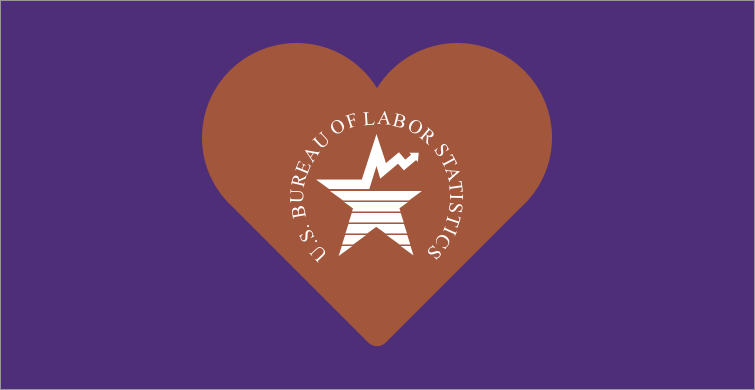Why I Love the Bureau of Labor Statistics

Data
Local Area Unemployment Statistics
Source
Bureau of Labor Statistics
Find on PolicyMap
- Economy
- Employment
- Unemployment
- Employment
- Labor Force
- Employment
I have a favorite government data provider. It’s the Bureau of Labor Statistics. They’re really wonderful. Don’t get me wrong, I love all our data providers, but the BLS regularly goes above and beyond, as I was reminded of by an e-mail exchange I had with them recently.
We only have a couple datasets on PolicyMap from BLS, unemployment data from the Local Area Unemployment Statistics dataset, and industry-subsector employment and wage data from the Quarterly Census of Employment and Wages dataset. It’s only two datasets, but the unemployment data is our most-frequently updated dataset, with new data coming every month.
Not only do they release updated data every month, but they release it at exactly 10:21 AM on the scheduled date. That’s reliability. The data file format is clear, simple, and in the last 120 months, it’s changed exactly once (and it was a great change). Their documentation is both clear and comprehensive. Changes to their methodology are announced months in advance.
But the BLS isn’t just a quality data provider. It’s an agency that I have overly affectionate feelings towards. And that’s because any time I e-mail a department of the BLS, I get a clear, complete response within hours. (Even more amazing, when I call them, the person who answers the phone – after one ring – is invariably able to answer my question without transferring the call.)
This came up last week when I was looking at the most recent monthly unemployment data at the county level. Colorado and Indiana caught my attention, because their counties contrasted so starkly with neighboring counties in neighboring states:
This sometimes raises some red flags when looking at data, because often these neighboring counties have very similar demographic and economic conditions, leading me to suspect the difference is due to the methodology of the data collection rather than the economic conditions on the ground. In the Four Corners region, is Colorado really such a remarkable corner?
I put this question to the BLS, sending them a question through a form on their website. Just hours later, I got a three paragraph response from BLS economist Susan Campolongo:
Hi Bernie,
Overall, the differences you’re seeing should mostly be reflective of the differing economic conditions between neighboring states. Colorado, for example, had the lowest unemployment rate in the nation in April (2.3% seasonally adjusted/2.2% not seasonally adjusted), as well as its lowest rate since we began estimation in 1976. By contrast, neighboring New Mexico had the highest unemployment rate in the nation. Likewise, in April, Indiana recorded its lowest unemployment rate in over 15 years. Both Colorado and Indiana have well surpassed their pre-recession employment levels (both in our household data and in the nonfarm payroll series), whereas states like Ohio, Illinois, and New Mexico have not yet regained their pre-recession levels of employment. Over the past couple years, Wyoming’s economy has been negatively affected by the downturn in the oil and gas industry. Additionally, the counties in Northwest NM/NE Arizona/SE Utah are home to some of the largest Native American reservations, which typically have had high levels of unemployment.
Also note that since our county data are not seasonally adjusted, I would exercise caution with monthly comparisons between counties. While adjacent counties often will have similar seasonal patterns in employment and unemployment, that can certainly vary depending on the industry mix of the different counties.
As far as methodological reasons, we do force the employment and unemployment levels for all counties in a state to add up the statewide, not seasonally adjusted employment and unemployment levels. However, the adjustments in Colorado and Indiana over the past several months appear to be in line with the adjustments over the past several years. So while it is possible for that aspect of our methodology have an effect on neighboring counties across state lines, the differing economic conditions appear to be a larger driver of the differences between adjacent counties in this case.
How great is that? The key takeaway, for me, were the specific economic factors, like the declining oil and gas industry of Wyoming, and the Native American reservations in the Four Corners region. I’d known that this data isn’t seasonally adjusted, but it was interesting to consider how that might affect, say, one county whose tourism depends on skiing versus another county whose tourism depends on summer activities. (If these seasonal variations bother you, you might look at their annual data instead.)
So, thanks Susan, and thanks to the BLS! Keep up the good work!